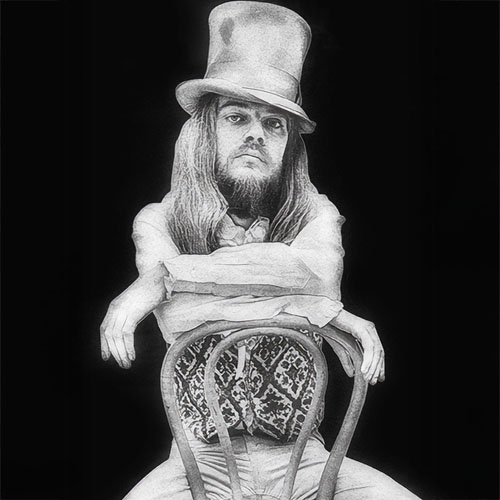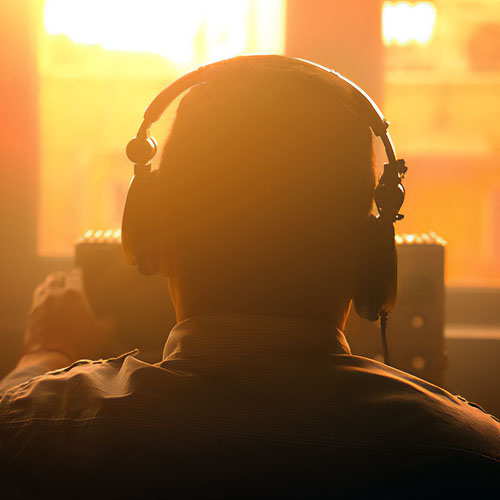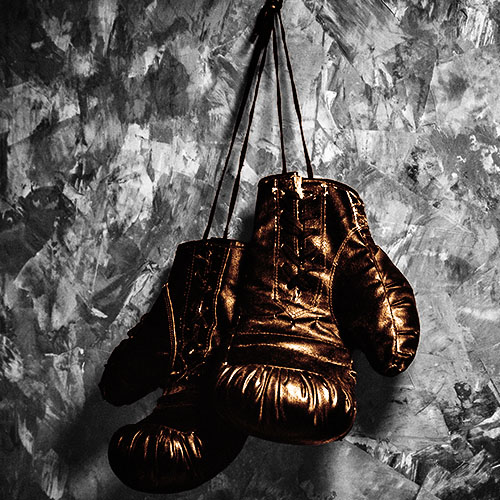Over 1,000 CIA-trained killers have formed their own Murder, lnc.,in Latin America-and now even the CIA is worried that this independent terror network is permanently out of control.
Our Legacy in Latin America
Shortly after 3:00 P.M. on January 27, 1977, the last day his family saw him alive, Roberto Poma finished his afternoon siesta at his home in a fashionable San Salvador suburb and prepared to return to his job as El Salvador’s director of tourism.
He did not travel alone. Like several other countries in Central America, El Salvador was wracked by violence between left-wing and right-wing terrorists. So, Poma drove with three armed bodyguards, one acting as chauffeur. As his car entered a narrow street, a truck suddenly cut him off. Poma’s driver tried to maneuver around it but was then rammed by another car. As Poma and his bodyguards pulled their guns, grass cutters working with machetes on a nearby hillside picked up machine guns hidden nearby and riddled Poma’s car. The three bodyguards were killed, and Poma, wounded, was whisked away in a car. In a matter of seconds, the attackers were gone. Poma’s family later paid $1 million in ransom for his return — futilely, for his kidnappers killed him, and then demanded another $500,000 from the family to tell where he was buried.
On the surface the kidnapping seemed just another in the hundreds of such incidents that convulse Latin America almost every day. True, it appeared to be slicker than most operations, but still just another in the seemingly routine murders, kidnappings, and shootings that mark Latin American politics.
But it wasn’t.
For one thing, the murderers weren’t Salvadorans; they were CIA-trained Cuban exiles. For another, although Poma’s death was blamed on “Communist terrorists,” the kidnap-murder had nothing to do with Salvadoran politics. In fact, Poma was murdered simply to provide funds for a growing, hemisphere-wide terror network supported by the secret police of at least five countries. Poma’s murder was one of the first important acts by this loose confederation of terror, whose very name now strikes dread all across Latin America — Mano Blanco (“White Hand”). Occasionally, it is also known as “The White Terror” or “The Eye for an Eye Organization.”
Since Poma’s death, White Hand — composed mostly of free-lance Cuban exile terrorists working with secret-police agencies and right-wing groups — has carried out dozens of other murders and acts of terrorism. And the group’s activities continue to spread — working with the Chilean secret police in 1976, they helped murder a Chilean exile leader in the United States and also blew up a Cuban airliner.
Indeed, there is some fear that White Hand’s activities are now out of control. A Penthouse investigation shows that:
- Since the members of White Hand all have either CIA connections or are CIA trained, the agency was aware of its activities from the beginning. Some CIA case officers in Latin America tacitly approved the group’s activities, since they were directed mostly at Communists. But higher-ranking CIA officers, alarmed at White Hand’s activities, ordered the case officers to sever any connections with White Hand and, where possible, to discourage them.
- Despite the orders, some CIA case officers sought to use White Hand for some “deniable” acts of terror in Latin America, including the assassination of Panama’s leader, Gen. Omar Torrijos.
- Several Latin American secret-police agencies rebuffed efforts by top CIA officials to sever connections with White Hand terrorists, arguing that since the CIA was unwilling to help them in “certain sensitive operations” outside their borders, they had no choice but to use free-lance White Hand operatives.
- The Cuban exiles have also rebuffed any attempts to end connections with White Hand, since, they argue, the money they get from White Hand operations is essential for their main goal: elimination of Fidel Castro. To that end, the exiles use the money to buy arms and other military equipment.
- From its original beginnings in El Salvador, White Hand has grown to the point where it operates in at least a half-dozen different Latin American countries, including Nicaragua, where it is now helping embattled Nicaraguan President Anastasio Somoza to fight off leftist guerrillas.
- To the alarm of Israeli intelligence, White Hand has tried to open connections with Palestinian terrorists; one of White Hand most notorious killers is Palestinian born.
The present White Hand network — now estimated by intelligence sources to include at least 200 Cuban exiles plus nearly 1,000 other Latin American right-wing terrorists — began in El Salvador. That tiny Central American country (only 8.260 square miles), like most of its neighbors is a dictatorship. And also like its neighbors El Salvador for years has been torn by open warfare between the forces of Left and Right — five leftist groups, two of them with armed guerrillas, have been battling the right-wing government for years. Murders and kidnappings are common.
The main reason why the government has stayed on top is a brutal (even by Central American standards) secret-police force headed up by an interesting character named Col. Jose Francisco Rene Chacon. Until his death early last year (he was murdered in a shotgun ambush), Chacon ran one of the most ruthless but efficient secret-police forces in all Latin America Chacon was no intellectual but nevertheless seemed to have a born instinct for secret-police operations and organization During his reign he set up a vast countrywide spy net and repressive machinery that acquired a reputation for knowing even when a Salvadoran had a bad thought about the government.
Chacon kept on top of anti-government groups by a brutality that would have made even the Gestapo blanch. He openly boasted of his ability as a torturer, claiming that no prisoner ever refused to give him information. And no wonder: Chacon’s favorite torture was anesthetizing a prisoner’s body below the waist and then cutting the man’s stomach and fondling his internal organs as the anesthesia wore off. Another favorite method was putting a prisoner piece by piece, into a meat grinder and then feeding the results to police dogs.
Despite Chacon’s menacing reputation. he was close to the CIA , which had him on the agency’s payroll as a source of information about Salvadoran politics. The agency sent Chacon to one of its stateside training centers and, at the colonel’s request several years ago, secretly outfitted him with the most advanced wiretapping and telephone-monitoring equipment Chacon promptly tapped every telephone wire in the country, a not especially difficult task since poor El Salvador (the median income is $615 annually) has only a few thousand telephones. And that wasn’t all under an American arms embargo because of recurring armed tension between El Salvador and Honduras. Chacon’s government was desperate for weapons. Using his CIA connections, Chacon shopped all over South America and got enough weapons to keep his country’s military afloat — all while the CIA looked the other way.
Still, Chacon wasn’t satisfied. Despite the ferocious reputation of his secret police, it lacked what intelligence operatives like to call “extraterritorial capability,” meaning that Chacon lacked the resources to track down anti-government forces operating in neighboring Costa Rica, for example. During his travels throughout the hemisphere and his talks with various secret-police chiefs, Chacon got an idea: why not have the secret-police forces of several Latin American countries pool their resources and set up a roving sort of secret-police confederacy that would assassinate exile leaders, disrupt cells of anti-government forces operating in sanctuaries, and generally carry out the dirty work?
Chacon’s idea was attractive, since secret police throughout the hemisphere shared a common problem. Chile’s dreaded secret-police agency, DINA, for example, was eager to get rid of exiles operating outside its borders. The Guatemalans faced a festering problem of leftist guerrilla units slipping back and forth across its borders. The Nicaraguans wanted to stamp out anti-government forces operating from sanctuaries in Costa Rica.
And so White Hand was born. Chacon’s first step was deciding who would work in the organization. He at first recruited some old right-wing terrorists, but he discovered not only that they weren’t very good but also that they were unsuited for dangerous operations outside the country. Further, he discovered that in order to carry out such hemisphere-wide terror operations, he needed operatives who were not known to be affiliated with any particular secret-police organization. Plainly, he needed trained terrorists who were not members of anybody s secret police. Where could they be found? It wasn’t planned that way, but the solution was provided by the CIA.
Throughout the 1960’s the CIA had trained hundreds of Cuban exiles in the esoteric military arts, including demolitions, weapons, and guerrilla warfare for the not-so-clandestine war against Fidel Castro. But by 1967 American government opinion had swung away from support of exiled Cubans; President Johnson ordered the CIA program dismantled. This meant that at least several hundred Cuban exiles, many of whom had received the best military training the Pentagon and CIA could offer, were out of jobs. Cut loose from the CIA payroll as America’s attention turned to Vietnam, the exiles split up into an alphabet soup of “sometimes-warring” factions and then tried to carry out the war against Castro on their own. But hindered by lack of money and sophisticated arms, the exile effort failed. To raise money, some exiles went into the drug-smuggling and coffee-smuggling business. In the process they came to the attention of Latin American secret-police agencies.
Most important, the exiles’ discipline, training, and experience impressed Chacon; the exiles seemed perfect for the new White Hand organization. Quickly, Chacon, representing a loose coalition of Latin American secret-police agencies, got in touch with some exile leaders: would they, he asked, be interested in becoming involved in some “anti-Communist operations” in Latin America? The rewards, Chacon promised, would be great: a free hand in the continent, cash to buy arms and equipment, plus, most important of all, “any necessary support” for their operations against Fidel Castro.
Chacon’s move split the exile leaders, the more extreme factions agreeing but other factions arguing that getting involved in Latin American political wars having no demonstrable connection to the goal of toppling Fidel Castro could only hurt the exile movement.
“It was not surprising in the slightest.” said one CIA official involved in the 1967 dismantling of the Cuban exile network “that some of the exiles would get mixed up much farther south in Latin America. In the first place, the agency had no idea, really, about what to do with these people. Here we had guys who were trained snipers. bomb experts, guerrilla warfare experts. and whatnot suddenly being told we no longer had any use for them. It was thanks very much and good-bye. And then what were they supposed to do? How many machine gunners do you know who can get a job, Just like that? And a job doing what? They had spent their youth training for a specific job to which they had dedicated their lives: getting rid of Castro. That is all they thought about, all they dreamed about, all they lived for. Now we threw them out in the street. Some gave up at that point but a lot of them said, ‘Okay, you won’t help me anymore; we’ll just go out and get rid of that guy [Castro] ourselves. And if you won’t help us anymore with arms and money. then we’ll go someplace else.’ While Hand was the someplace else.”
By the early part of this decade, a new note of professionalism had entered Latin American terror: where victims had once been shot in Banana Republic-style ambushes, now they were being picked off in sophisticated operations right out of the training manual at Fort Bragg’s Special Forces school. Where assassinations had once been carried out as something of a hit-or-miss affair (shotguns were a big favorite, since their wide field of fire compensated for poor aim), now people were being killed with sophisticated C-4 explosives. Where anti-government exiles had once let safe in their sanctuaries, now they were being murdered in carefully planned operations with infrared-equipped snipers.
White Hand had a perfect cover. Beginning in 1968, Latin America from one end to the other has been pockmarked by wars between emboldened leftist forces that have turned to violence and right-wing “private terror squads.” There has been so much violence that it is difficult to tell after a while who is shooting whom or which faction is doing the shooting. Routinely, right-wing squads shoot somebody and then blame it on “violencia roja” (“Red Terror”). Then the “Reds” kill somebody and try to make the murder look like the work of right-wingers. White Hand murder operations simply became part of the myriad slaughters, and few people had any idea that there was a sophisticated, hemisphere-wide terror organization at work.
But CIA officials knew about White Hand, and to some agency operatives it represented a tool to be used. “It was certainly a tempting asset,” says a CIA official familiar with White Hand. “Here you had a bunch of trained killers for hire, willing to shoot anybody It’s important to understand that the Cuban exiles were — and still are — very good. They are not only fanatics but also trained fanatics. Also, they were experienced in all sorts of operations. I’m afraid that some case officers in Latin America became a little too intrigued with those people and began broaching things with them that, shall we say, should never have been broached. As you know, the agency put a stop to that sort of thing later. But while it was going on, the damage was done: Not only did you have a terror organization, but you had an organization that, at least to its members, would appear to have had an imprimatur of sorts from the agency.”
Actually, PENTHOUSE has learned, one of the ideas “unofficially” raised with Cubans known by some CIA case officers to be working with White Hand was the assassination of Gen. Omar Torrijos of Panama. The idea, first broached in 1973, came at the height of President Nixon’s all-out “war” on drug traffic. The CIA, then recruited to help end drug trafficking from Latin America, had been bugging Torrijos’s home and offices. According to CIA officials, the bugs revealed that the Torrijos family was deeply involved in drug trafficking to the United States. Some CIA officials working with the Bureau of Narcotics and Dangerous Drugs began to discuss openly the idea of assassinating Torrijos in a direct move to end the “Panama connection.”
This incredible idea never got beyond the talking stage, but it did permeate down to some CIA agents working in Latin America. Dutifully, they approached Cubans working in White Hand about the idea, noting that Torrijos, a leftist, strongly supported Castro. But even the fanatical exiles balked at that idea, arguing that they did not see how the death of Torrijos would stop drug smuggling or — even more important — how it would hurt Castro.
Meanwhile, White Hand flourished. From El Salvador, it spread to Guatemala, Nicaragua, Costa Rica, Venezuela, and the Dominican Republic and developed ties with secret police in another half-dozen Latin American countries. In addition to effecting political assassinations, White Hand by 1973 had become a full-fledged extortion organization, kidnapping various wealthy citizens and then holding them for ransoms that ran into the millions. Usually, White Hand operatives passed themselves off as Communist or leftist terrorists. And as the money rolled in, the White Hand arsenal grew: armored cars, flak vests, machine guns, sophisticated communications equipment, wiretap devices, and even light antitank rockets and mortars.
And the scope of White Hand’s operations was also growing. From simple assassinations and kidnappings, the group moved to outright political warfare.
It began in late 1975, when Chacon decided that Bernal Hernandez, a former friend who had drifted toward the left of the political spectrum, needed a lesson. In December, White Hand gunmen assassinated him. Then Chacon began holding discussions with his officials in Guatemala and Costa Rica on what to do about “various political deviants.” The Costa Ricans were especially infuriated by their country’s president, Jose (“Pepe”) Figueres, who had decided to establish diplomatic relations with the Soviet Union, thereby welcoming a Soviet embassy in San Jose, Costa Rica’s capital. Asked to “do something” about this alarming turn of events. Chacon’s White Hand terrorists set up a breathtaking scheme: an elaborate plan virtually to take over the country.
The plan, using three different code names, was approved by Nicaragua’s Somoza (he was angry with Costa Rica for allowing sanctuaries for anti-Somoza guerrillas) and Guatemalan government officials (for much the same reason). Basically, the plan called for not only the assassination of Figueres but also the bombing of the Costa Rican congress, attacks against police and security buildings in San Jose, and the seizing of the Soviet embassy and murder of Soviet diplomatic personnel.
But in this case White Hand had gone too far. The CIA, which had looked the other way ever since White Hand had begun operations, now became alarmed. Under no circumstances, they warned Guatemalan and Salvadoran officials, could the Costa Rican operation be carried out. The agency also passed the word to Chacon, and the operation was reluctantly canceled.
The White Hand plot set a whole series of wheels in motion, the most important of which was a growing sense in Washington that things had gotten out of control. To get some perspective on what was happening the CIA ordered the dispatch of two special agents who were to travel throughout Latin America and make up a report on White Hand and its activities. (It is interesting that the agency bypassed its own teams In Latin America for the job because CIA officials in Washington felt that some agency operatives in Latin America had grown too close to White Hand.)
The agents’ report took several months to complete and caused disquiet in Washington. It set out the whole story of White Hand from the beginning but then added that the group at that point had become so large and powerful that there was a “grave doubt” that the agency — or anybody else in the U.S. government, for that matter — had the power to stop it. According to the report, at least 1,000 murders and assassinations during the previous four years were the work of White Hand, as were countless kidnappings and other actions. The report also warned that since the secret-police agencies involved with the organization had promised “all possible support” for anti-Castro operations, various terror strikes against Cuba by exiles could be expected.
Almost on cue, a wave of anti-Castro terror broke out all over the Southern Hemisphere in 1976. From Venezuela, Cuban exile Orlando Bosch organized a plan to plant a bomb aboard a Cuban airliner. It exploded, killing all seventy-three persons aboard. The plot was worked out with the connivance of the Venezuelan secret police; White Hand terrorists in three other countries helped out. In Argentina Cuban exiles working with White Hand were asked by the Chilean secret police to murder a prominent Chilean exile in Buenos Aires. They blew him up by planting a bomb in his car. Guatemalan secret police helped White Hand terrorists slip into Mexico, where they shot up a Cuban embassy In Guatemala itself, the vice-president of the country’s congress was murdered by White Hand, this time in a professional assassination in full public view — while he was celebrating his daughter’s tenth birthday in a Guatemala City restaurant. He turned as two men walked up to him and shot him expertly in the head and neck with pistols. The murder shocked the country, and most of the dead political leader’s followers subsequently fled it.
White Hand had become emboldened, despite the Costa Rican episode, mostly because of its secret-police protection. By now highly organized, it developed standard methods of kidnappings: hit teams would be organized, along with a “safe house,” usually located just across a frontier. The victim would be taken across the border and then held for ransom. Normally, the victim was murdered after the money was collected to prevent him from talking. Most of the kidnappings were arranged after secret police had obtained bank records that would tip off the location of great wealth.
Kidnapping wasn’t the only source of income. Smuggling is a flourishing racket in Latin America, consisting primarily of coffee (smuggled out of Colombia to avoid taxes), weapons, and, of course, drugs, particularly cocaine and marijuana. Since the rackets were overseen by the secret-police forces, there was hardly any risk when White Hand became involved.
If White Hand at that point was regarded with some alarm by the CIA, Israeli intelligence reacted with outright panic. The reason was not so much White Hand’s terrorist activities — Israel usually doesn’t care what happens in Latin America, which is regarded as an American sphere of influence — as the fact that White Hand began to acquire an international connection. And the connection was with the Palestinian guerrilla movement.
According to CIA and Israeli intelligence sources, the connection stemmed. from Jorge (“Koki”) Zimeri. Half Palestinian, Zimeri had family connections in Palestinian communities throughout the world. His own family included wealthy business leaders in Guatemala, but Zimeri himself early in his life drifted into violent politics. Described in one CIA report as a “psychopathic killer,” Zimeri was suspected to have worked as a volunteer killer for terror squads on both the Left and Right and then was recruited by Chacon into White Hand. Nobody is quite certain exactly what Zimeri did for White Hand; but according to intelligence sources, he forged connections with various Palestinian factions, who were discussing the possibility of a Latin American base for operations against Israel. Israeli agents began to track down Zimeri.
Apparently Zimeri reacted poorly to any attempts to control him, ignoring the procedures outlined by Chacon and White Hand. In early 1975 Zimeri purportedly recruited the son of the president of Guatemala into his private war without the president’s knowledge. In an attack on a carload of opposition political leaders, the boy was injured by grenade fragments. According to the CIA report, the secret police were ordered to kill Zimeri — who shot two men sent to do the job. “Open season” was then declared on Zimeri, who next became the target of a large-scale secret-police ambush that used automatic weapons and grenades. Miraculously, Zimeri survived, with eight wounds. He went underground, escaping to El Salvador and then somehow making his way to Miami, where his injuries were treated by friends in the Cuban exile community.
However, Zimeri’s freedom didn’t last long. On the run because of a $30,000 “hit contract” put out by Guatemalan secret police, Zimeri was picked up by U.S. authorities last year on an illegal gun charge. Guatemala immediately asked for his extradition, charging that Zimeri had murdered a Guatemalan naval lieutenant whose skeletal remains, it said, were found in Zimeri’s factory in Guatemala. Zimeri is now out on bail while his extradition case is being argued in court. He claims that he is innocent of any murder charges.
“From the information available to me, Jorge Zimeri is a totally innocent man,” says his American lawyer, Edward Shohat. “He has done nothing wrong, and his only crime is fighting the ruling clique in Guatemala, helping to finance the opposition’s activities — and he knows he has information which powerful people in Guatemala would like to keep undisclosed. It is they, not Jorge Zimeri, who are the guilty ones.”
In any event, Zimeri is now effectively out of action. Israeli intelligence has lost interest in his fate, although it continues to watch White Hand nervously for any signs that it will cooperate with the international Palestinian movement. But even without a Palestinian connection, White Hand is now an extremely formidable group, which flourishes despite growing American official pressure against it. Late in 1976, for example, Cuban exiles connected with White Hand were recruited into a plot by the Chilean secret police to murder Orlando Letelier, leader of the Chilean exile community in Washington, D.C., the murder — Letelier was killed when a time bomb blew up his car in broad daylight — amounted to a virtual insult to American intelligence agencies, considering the fact that the murder was carried out in Washington and that the Chileans made no real attempt to hide their involvement.
The Letelier murder represented something of a high-water mark thus far in White Hand’s operations, demonstrating that its members believe that they can operate with impunity anywhere that they choose — including the United States. In the past twenty-four months White Hand groups have held two major summit meetings — one in Guatemala, the other in the Dominican Republic — to plan further operations. Meanwhile, the murders, kidnappings, and other acts of terror continue unabated — there were at least a dozen White Hand operations last year alone, but the victims usually lack the prominence to rate even a mention in U.S. newspapers.
One exception, however, is the White Hand involvement in helping the Somoza regime in Nicaragua stamp out the insurrection against that dictatorship. Specifically, White Hand is being used to terrorize anyone suspected of providing aid to anti-government forces. In two recent cases businessmen were kidnapped by White Hand terrorists and then murdered after a ransom was paid by the victims’ families. The government blamed the murders on left-wing guerrillas. Other recent White Hand operations have been carried out in El Salvador and Argentina.
“The fact of the matter,” says one American intelligence official, “is that we created the monster; we created those secret-police forces, we helped them, we created the Cuban exile movement. Now we find that the monster has broken his shackles and is running wild in the village. I don’t have any bright ideas on how to stop it, but I know we had better start to think of ways.”

























